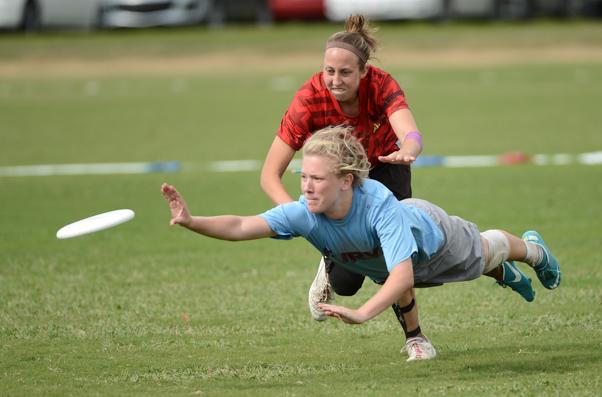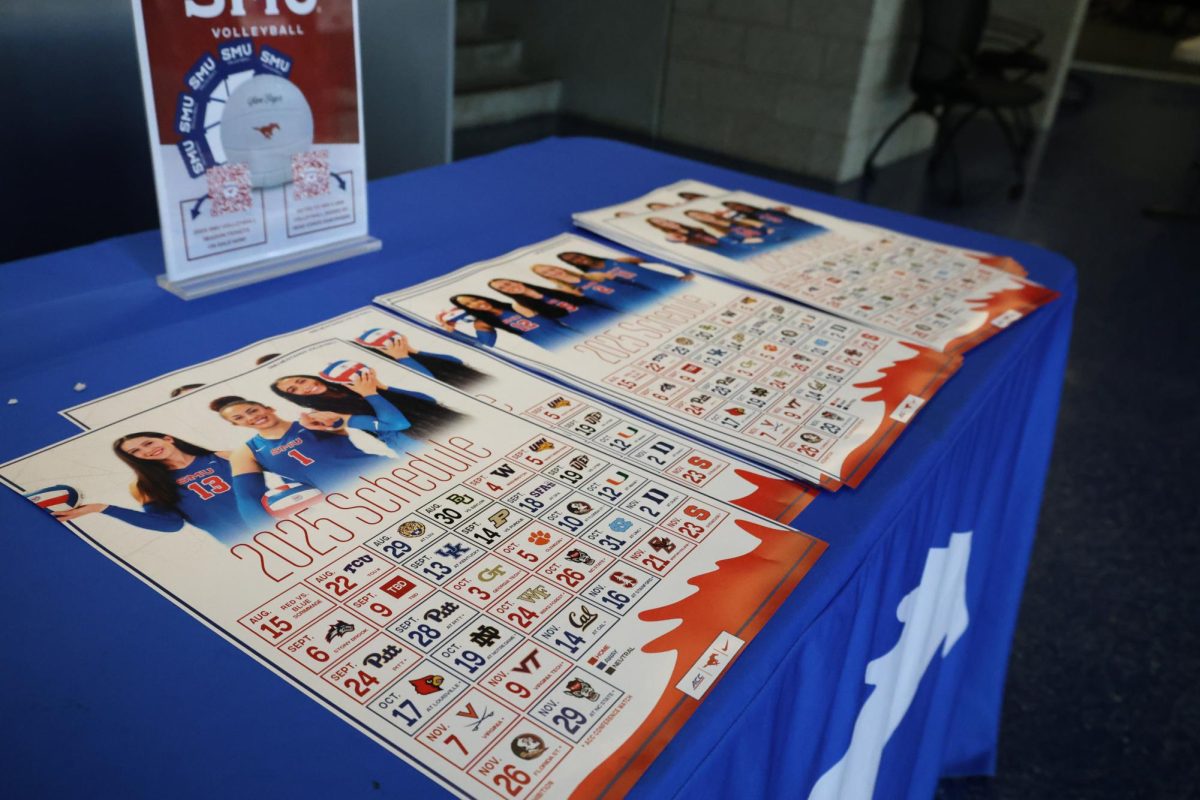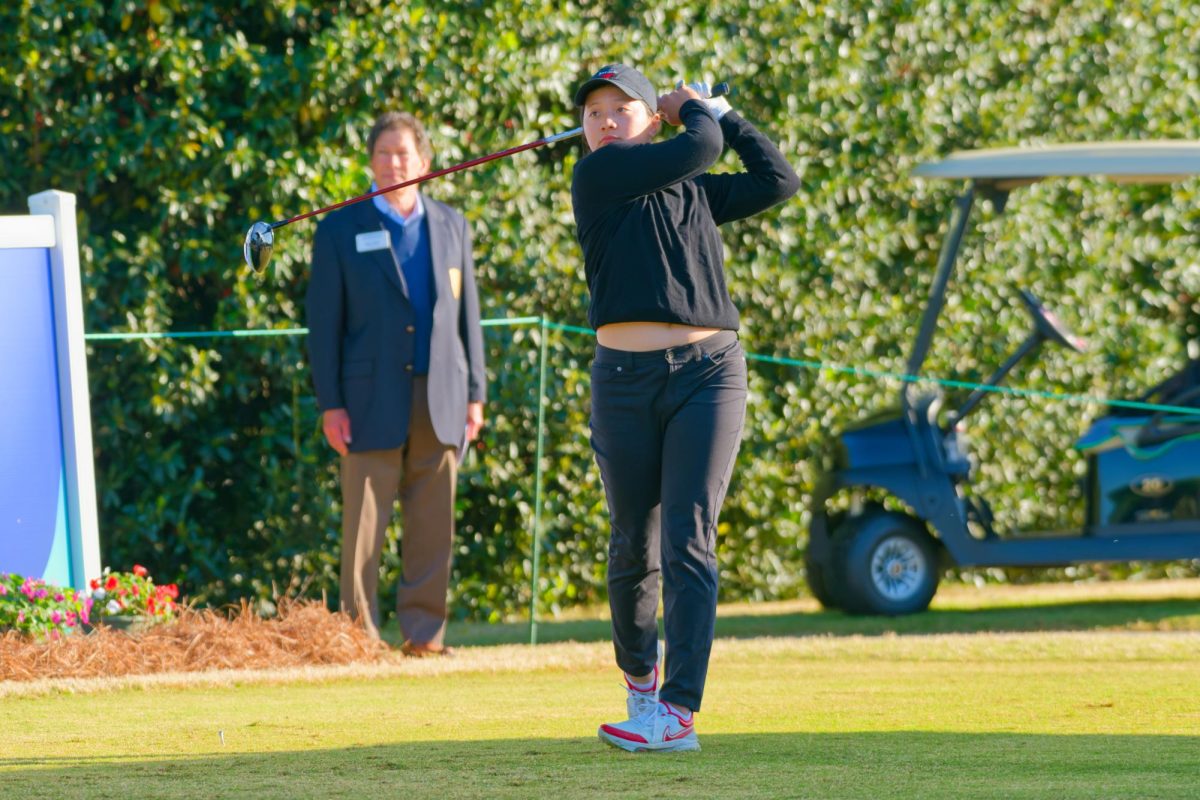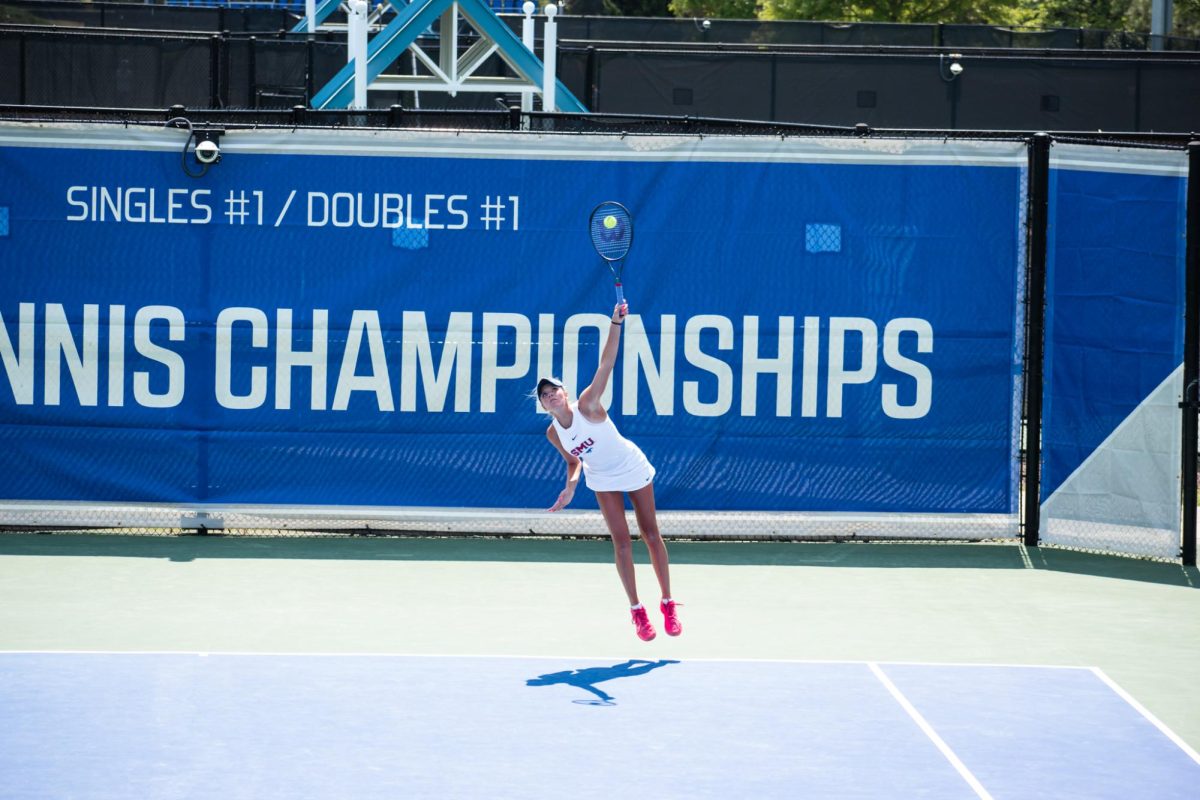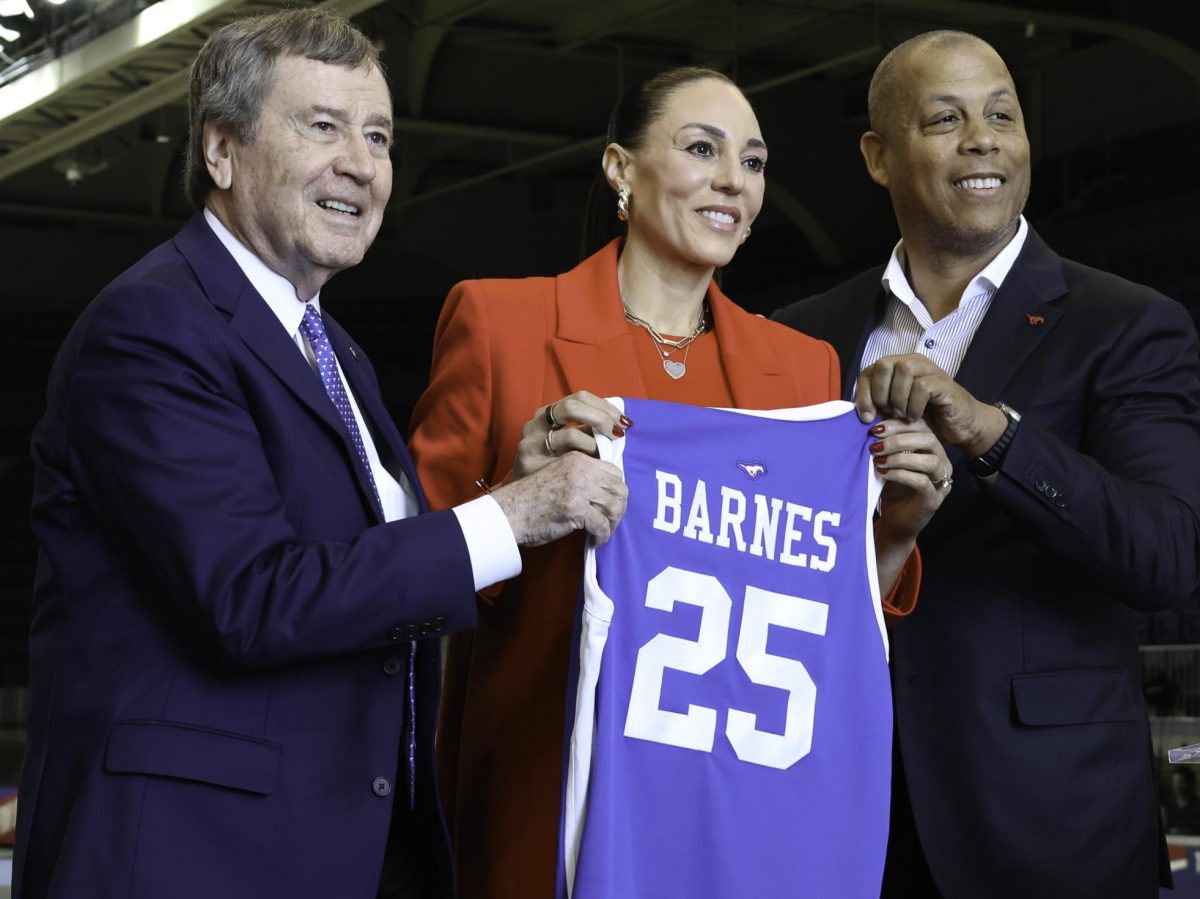By Hannah Claire Brimelow
On bright green grass and under the perfect Texas blue sky, 20 collegians charge from end-zone to end-zone, stopping to throw a plastic frisbee to open teammates.
Six minutes into the second half, the field echoes with the pounding of feet and excited yells of commands and names. Suddenly, a different voice crashes through and all the players lurch to a stop.
“Back up! No way! No!”
Annzi Christie, the only female player on the field, squares off against a 6-foot 2-inch player from the opposing team.
Her long, black ponytail ripples backward with each shake of her head and her lean muscles flex as she defends her space.
The rules of the game dictate that the players, rather than referees, must call their own fouls, turnovers or out-of-bound plays.
As she squares her petite frame against the young man’s, the men applaud her tenacity and adamancy while the SMU coach nods his approval from the sideline.
Within a few minutes the opposing player takes a few grudging steps backward, increasing the distance between him and Christie to what she deems acceptable.
Just as quickly as she paused it, Christie recommences the game with a quick flick of her wrist that sends the disc into the open arms of her SMU teammate in the end-zone.
Christie is just one of many women who play ultimate frisbee in college, local and national leagues.
According to The New York Times, ultimate frisbee has become one of the fastest growing sports in the world in the past 10 years and women’s participation was crucial to its development in over 42 countries. USA Ultimate, the association that governs the sport, reports a 163 percent increase in members since 2003. An estimated 30,000 people, of both genders, play for USA ultimate leagues each year.
“While there are significantly fewer female players than male players, most people who play say that the community aspect of Ultimate is a large part of why they play,” said Peri Kurshan, the president of the association’s board of directors.
SMU’s team, like most college teams, is co-ed.
Traditionally, men and women’s sports have been divided based of the physical differences between the genders.
Men are bigger, stronger, and more aggressive, thanks to the seven to eight times more testosterone they naturally have.
Women’s sports are expected to be played with minimal physical contact and frequently, like softball for example, have modified equipment and field sizes to accommodate the feminine body.
“It’s one of the few sports whose top tier of play makes no distinction between the two gender divisions. The men’s and women’s divisions are showcased equally in all U.P.A. championship events,” said Kursham
Ultimate frisbee centers on the transfer of the disc from players on the same team into an end-zone.
In two, 20 minute halves, the players stretch, jump, and grab at the disc as it sails through the air.
The teams, each of which is allowed to have seven players on the field at a time, are quick to swap off their offensive and defensives line at each turnover.
The dynamic between the players is essential to success of the team, according to Clay Moore, a senior member of the SMU club ultimate frisbee team, also known as EVO.
“It has to do with how your team works,” said Moore. “If you don’t have good team chemistry, you don’t have a good team. It is as simple as that. You can have the best players, but if you are unable to build off each other and rely on each other, then you can’t move the disc [to the end-zone] that well.”
Moore said that because there is not a specific body type for the sport, anyone can play and be successful.
“Being 6-foot 4-inches and 215-pounds, I am just as likely to play the sport as my 5-foot 3-inch, 110-pound teammate,” More said.
This unique attraction fosters a sense of pride in younger female players, like Emma Hulbert, a high school sophomore who visited the SMU campus from Chapel Hill, North Carolina.
“The ultimate team at my high school is co-ed and I’m just as good as the really sporty guys,” Hulbert said. “I wouldn’t be happy on an all-girl team because I might not be as challenged. That’s what I like about the sport. It doesn’t matter than I’m a girl. It just matters that I throw hard and make good plays with the rest of my team.”



